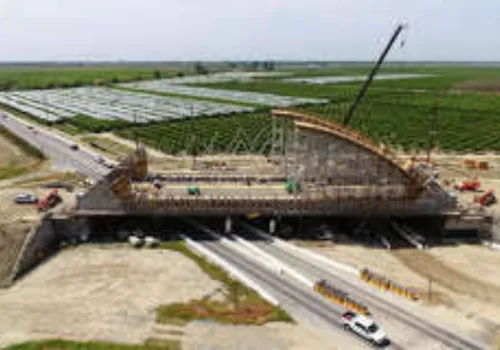
At a time when California’s high-speed rail project teeters on the edge of abandonment, a potential rescue plan is emerging. The High-Speed Rail Authority, under new CEO Ian Choudri, is exploring a bold financing model that combines $1 billion annually in state funding with support from private investors.

“We are looking at state-level commitments so that we can bring private equity partners in,” said Choudri during the American Public Transportation Association conference in San Francisco. His optimism stands in contrast to years of turmoil that have plagued the bullet train plan, including construction delays, ballooning costs, and political clashes.
The immediate goal is to secure enough capital to complete the 171-mile Central Valley segment from Merced to Bakersfield. If successful, this could pave the way to auction operating rights to private firms. “There’s always been a desire to have the private sector involved at the right time, when the risk is understood,” said Dan Richard, former chair of the Rail Authority.
California would use funds from its cap-and-trade emissions program—currently set to expire in 2030, though Gov. Gavin Newsom wants to extend it until 2045 under a rebranded “cap-and-invest” framework. Yet that plan faces political headwinds. Lawmakers and transit advocates, including Michael Pimentel of the California Transit Association, argue the money should also support other transit systems.
.webp)
Even with stable public funding, the project must overcome skepticism from industry veterans like Richard Tolmach, who has seen previous attempts to engage private capital falter. “A billion dollars a year will mummify the project in its current condition,” Tolmach warned.
Still, infrastructure experts believe there’s potential. “There are significant ways to monetize (and) commercialize long linear rights of way,” said Sia Kusha of Plenary Americas. These could include fare revenues, real estate around stations, and tunnel usage fees.
Choudri is determined to shift the narrative. Since taking office, he has searched for savings, established forums with industry leaders, and released a request for expressions of interest to court private firms. According to Richard, consistent funding could finally unlock progress: “It’s the financial uncertainty that keeps prolonging the construction timeline.”
Sebastian Petty of SPUR, however, emphasized that many unknowns remain. He said companies will want to see revised forecasts and detailed project schedules before committing.
.webp)
Even so, the promise of an electrified, high-speed rail line zipping from San Francisco to Los Angeles remains alive—for now.
Originally reported by Rachel Swan in San Francisco Chronicle.